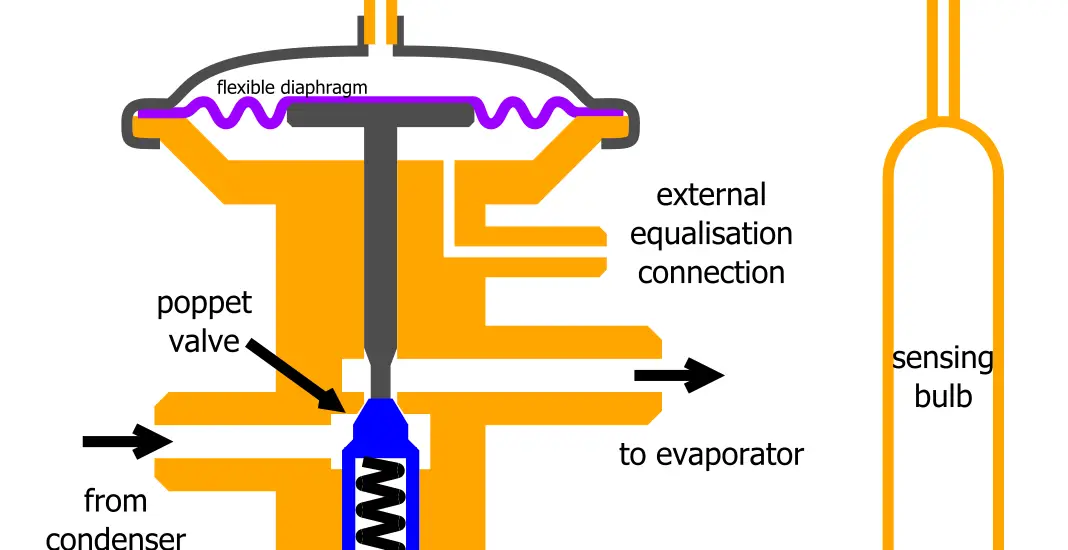Having an expansion valve not working can disrupt the cooling system of your equipment. Fortunately, most problems with expansion valves are common and solvable. This guide will walk you through a systematic approach to diagnosing and resolving these issues.

Table of Contents
Step-by-Step Guide to Troubleshoot Expansion Valve Not Working
Here’s a detailed, step-by-step guide to help you navigate this process.
1. Safety First
Before you start any work on your cooling system, always turn off its power. This can usually be done via a switch or by unplugging the unit. This precaution ensures your safety and also protects the system from potential electrical issues or damage.
2. Visual Inspection
Begin your troubleshooting with a simple visual inspection. The expansion valve is typically a small device with an inlet and an outlet. Look for signs of physical wear, corrosion, or any other obvious damage. If you see any blockages or debris around the valve, clean it carefully.
3. Check the Refrigerant Levels
The expansion valve relies on the correct amount of refrigerant to function properly. With a refrigerant gauge, you can measure the current levels in your system. If they’re low or there’s a noticeable leak, it might be causing the valve to malfunction. Refilling or repairing leaks should be done by professionals, as the refrigerants used in these systems can be hazardous.
4. Test the Valve Operation
You can gauge the valve’s performance by checking the temperature of the outlet pipe. Use a handheld thermometer or an infrared one like this Etekcity Infrared Thermometer 1080 from Amazon for this. If the temperature is far from the recommended range (either too cold or too hot), the valve might be the culprit. A significant temperature difference between the inlet and outlet can also be a telltale sign.
5. Replace the Expansion Valve
If after all the above steps, you’re confident that the expansion valve is the issue, consider replacing it. While some might attempt this on their own, if you’re not familiar with the process or don’t have the necessary tools, it’s best to hire a technician. Remember, incorrect installation can lead to more issues in the future.
After replacement, always run a test to ensure the system is now working efficiently and that the original symptoms have disappeared.
Check out these other related articles…
Expansion Valve Function: Easy 101 Guide
Expansion Valve Chiller: Your Quick 101 Guide
How Does an Expansion Valve Work: Your Easy 101 Guide
Expansion Valve Adjustment in 6 Easy Steps
Expansion Valve Orifice: A Comprehensive Guide
Common Symptoms of a Malfunctioning Expansion Valve
The expansion valve is a crucial component in your cooling system, and when it’s not functioning correctly, your system may exhibit various symptoms. Recognizing these symptoms early can save you from more significant problems down the road. Here are the most common signs:
Reduced Cooling Efficiency: The primary role of the expansion valve is to manage the refrigerant’s flow, ensuring your system cools efficiently. A faulty valve might not regulate this flow properly, leading to less effective cooling.
Frost or Ice Formation on the Evaporator Coil: An incorrect refrigerant flow can cause the evaporator coil to become too cold, leading to frost or ice build-up. This not only impacts cooling efficiency but can also damage other components.
Compressor Working Continuously: If the expansion valve doesn’t allow the correct amount of refrigerant into the evaporator coil, the compressor might work overtime trying to compensate, leading to increased wear and tear.
Unusual Noises: When the valve is not working as it should, you might hear hissing, bubbling, or other abnormal sounds originating from the cooling unit.